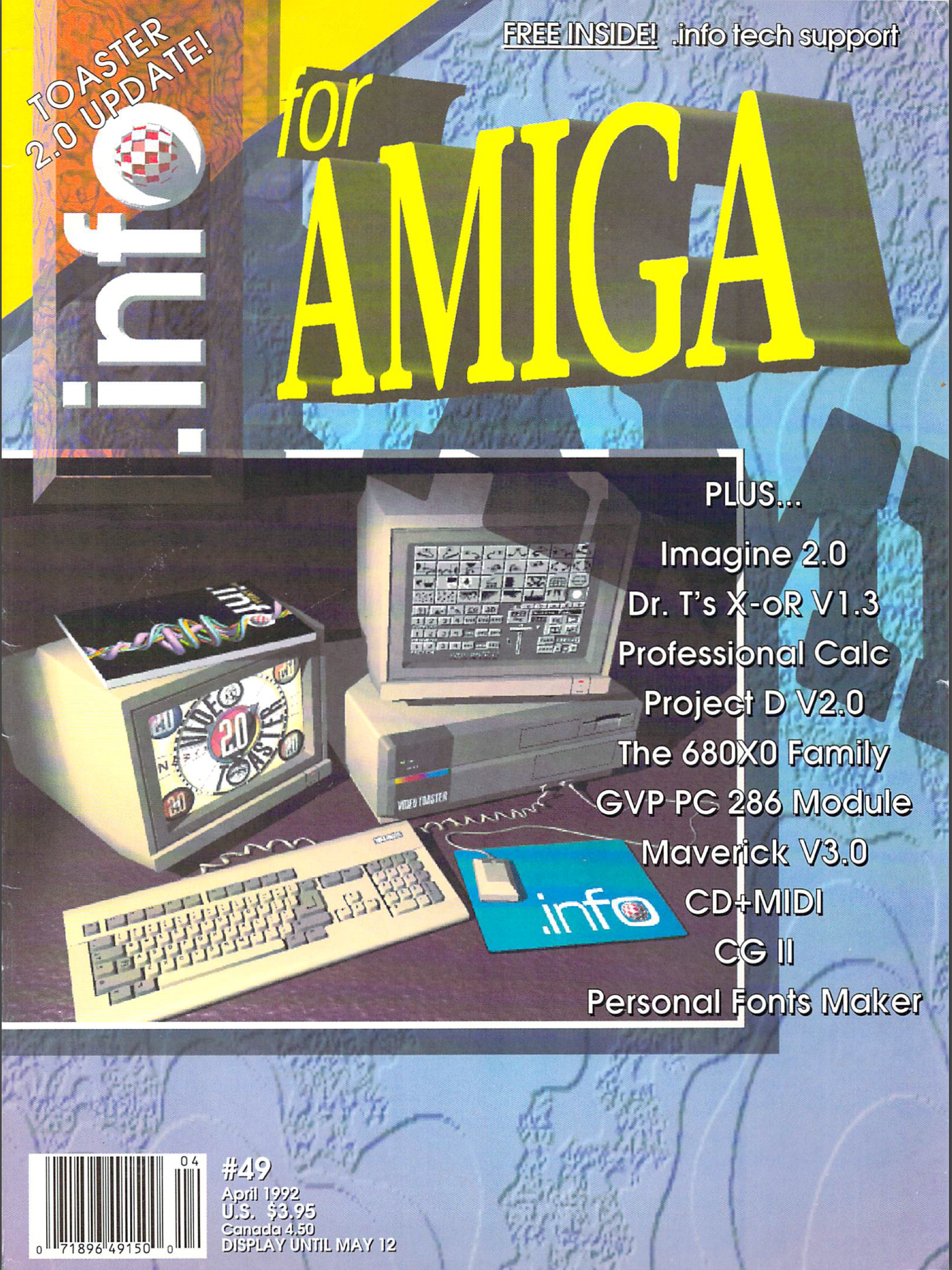Retrospective: .info Magazine

Back in the Day
Computer and video game magazines are a primary source of nostalgia for me. As a small-town, pre-Internet kid they were my primary window into a wide world of innovation and possibility - and yes, into the world of video games that I loved. In addition each magazine was a time capsule, a snapshot of an industry that was growing by leaps and bounds.
I collected many computer magazines. My favorites in order: Compute!'s Gazette, .info, Computer Gaming World, Computer Game Review, AmigaWorld, Game Player's, Compute!, Commodore Magazine, and Ahoy!
15 Heavy Boxes vs Archive.org
For 30 years I hauled around boxes full of old computer magazines as I occasionally moved. I considered them too sentimental and important to throw away - there was a lot of good historical info there.
Just two years ago I discovered something life-changing: archive.org had high-quality scanned copies of all my magazines, including all the issues I was missing. And in most cases the scanned copies were higher quality than my torn and faded collection.
I gave up most of my hard copies and started re-reading .info magazine from the beginning. I would download the PDF's on an iPad Pro 12.9" and export them to Kindle so that I could naturally swipe page to page. It was wonderful: with the large iPad the digital magazine pages are approximately the same size as their physical counterparts.

It took me probably more than a year of occasional browsing, but I finally finished skimming through all 49+ issues of .info! It was a blast to see all the old game reviews and game ads, to find videos of those games on YouTube, and to finally get to see those games in action!
The digital archive of .info magazine is available here:
https://archive.org/details/infocommodoremagazine
Setting the Stage
The precursor to .info magazine was called Cyborg Gazette. It was an extremely homegrown affair and only ran for 3 issues.
.info itself ran from 1983 to 1992, which felt like eons at the time. It started out covering only the 8-bit Commodore 64 computer. Then it spent several years covering both the Commodore 64 and the 16/32-bit Commodore Amiga computers. And at the end it dropped the 64 and covered only Amiga.
The magazine went through several corresponding name changes. It started out as INFO-64, became just INFO when Amiga coverage was added, and finally re-branded as .info once C64 support was dropped. That final name was clever: Amigas had app icons that were separate from other program code and the icon files had an ".info" suffix.
.info is notable for being published entirely on personal computers, well before "desktop publishing" was mainstream. Desktop Publishing isn't even a phrase that's used anymore because now it's just the way everything is done, but at the time it meant that you were creating print masters using personal computers rather than a combination of manual layout and either manual typesetting or phototypesetting using expensive commercial equipment.
As such, .info was a true pioneer. As Babylon 5 was to television, .info was to the magazine industry. If you don't catch the reference, well, Babylon 5 was one of the first television shows to use computer graphics for all of its special effects, including frequent spaceship scenes and space battles (seaQuest DSV was the first, but in my opinion Babylon 5 was a much better show and had more of an impact on the industry).
Macintosh ended up dominating the Desktop Publishing market. But the Amiga found its niche in computer graphics and Desktop Video. For years it was faster and had better graphics and sounds than Mac or PC did. Electronic Arts' classic Deluxe Paint program was a mainstay for most game artists developing for any platform. Desktop 3D rendering was effectively born on the Amiga; most of the early 3D modeling software premiered on it.
The capstone of the entire Amiga story was the release of NewTek's Video Toaster in 1990 which secured the Amiga's place as the King of Desktop Video until the Amiga's demise. Video Toaster could perform live effects on video inputs such as fades, wipes, and text overlays. It also came with 3D modeling software called Lightwave 3D which was used by both seaQuest DSV and Babylon 5 to model and render their special effects shots.
Format
Unlike many other computer magazines of the day, .info didn't offer any type-in games (apart from a few small ones in the early issues) or companion game discs. Their original focus was on being a product roundup, which meant listing all of the new software and hardware available for the Commodore 64. That part was unopinionated but then they would weigh in with some game reviews as well as reviews of other software and hardware.
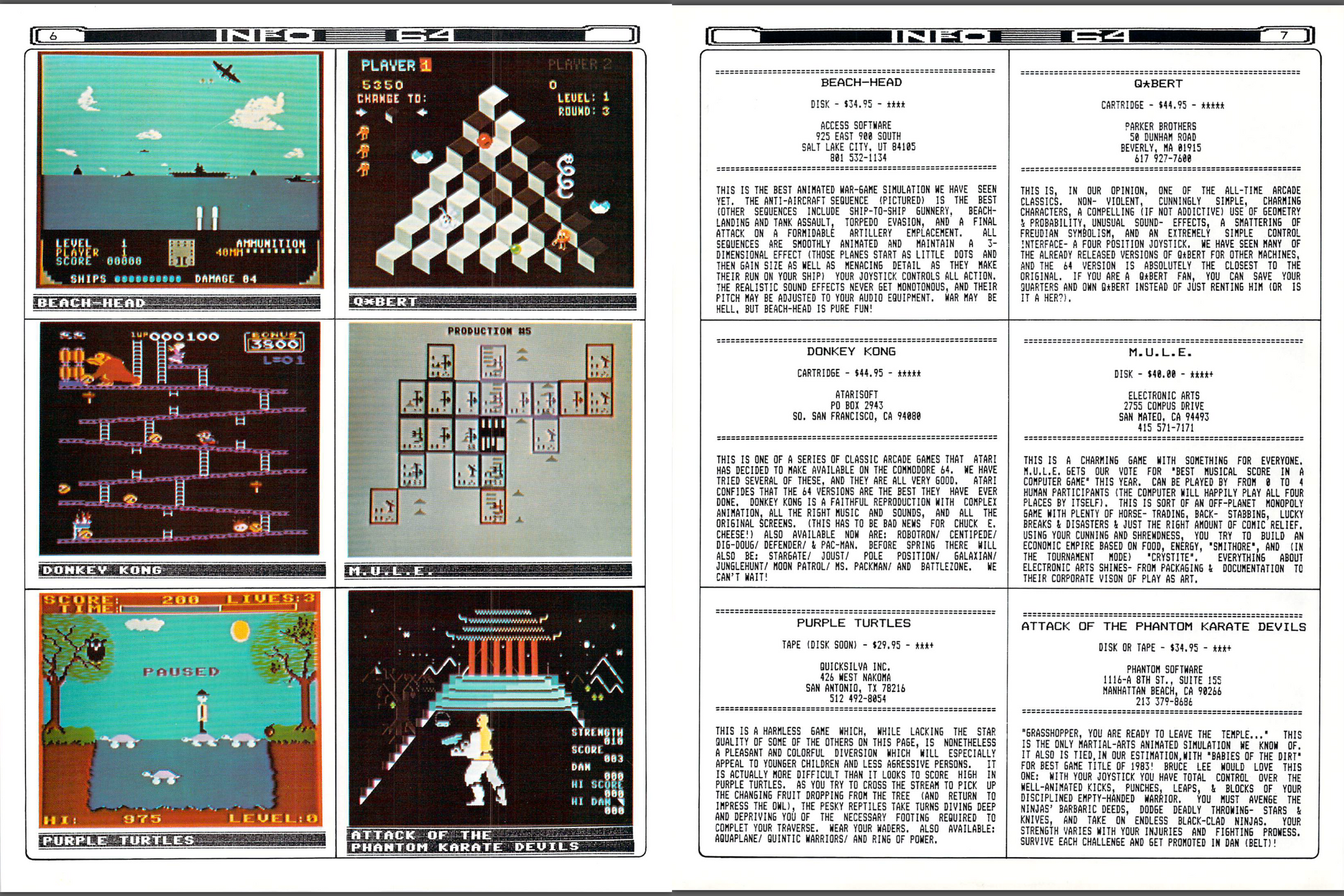
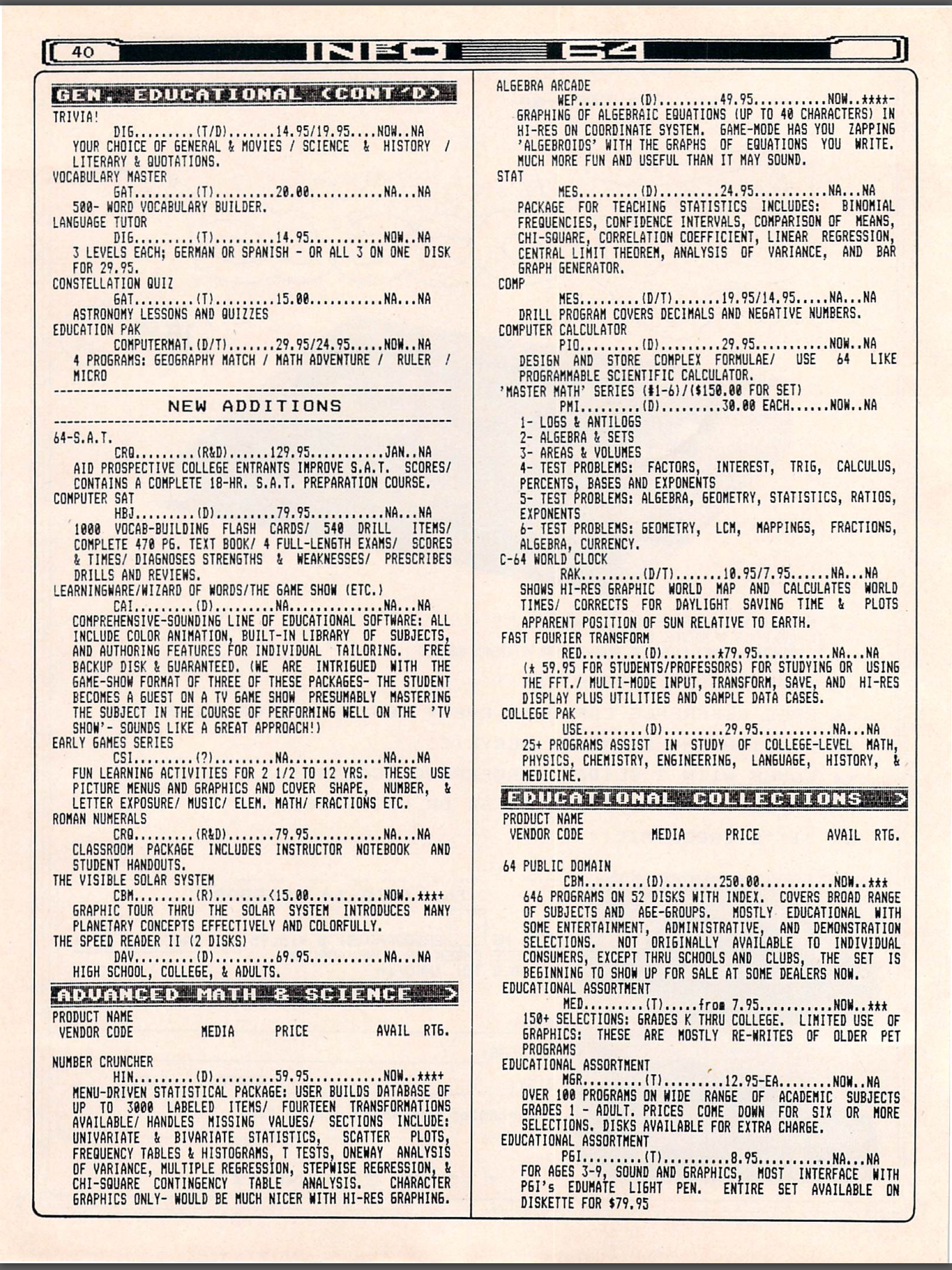
Over time they dropped the thankless task of doing product roundups and focused more on news and reviews, highlighting notable industry announcements and such.
As the Amiga became increasingly important in graphics and desktop video, .info added a substantial amount of coverage to art programs, 3D modelers, and sound editors.
Memories
My first issue was #21.
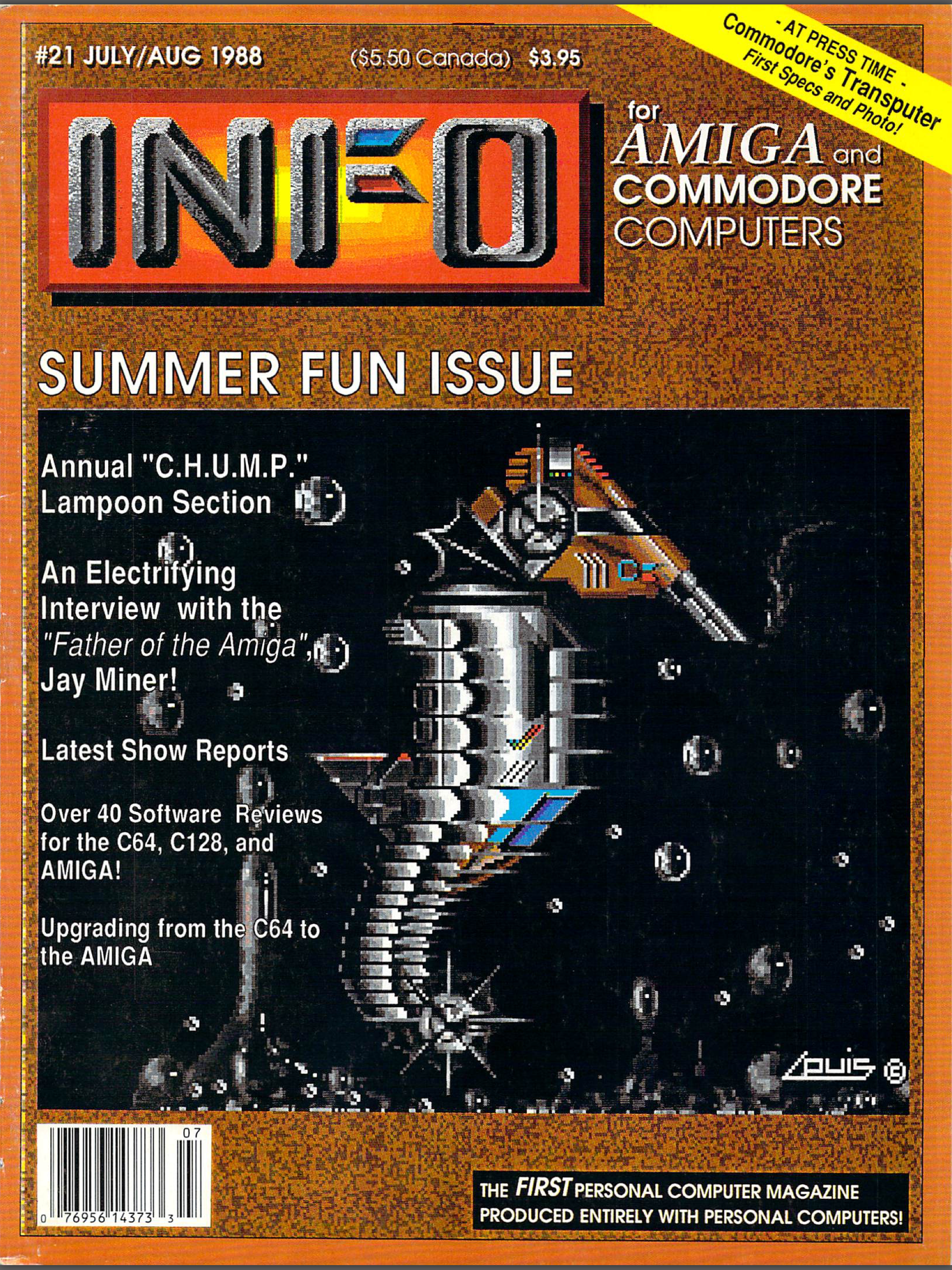
I was a teenager and was on a trip with my family to Albuquerque as I recall. We'd stopped by the B. Dalton bookstore in the mall (or was it Waldenbooks?) and I was engrossed in a wider selection of computer magazines than I was used to. This one looked cool. I was flipping through it and my eye had just landed on an amazing advertisement when my Dad said it was time to go.
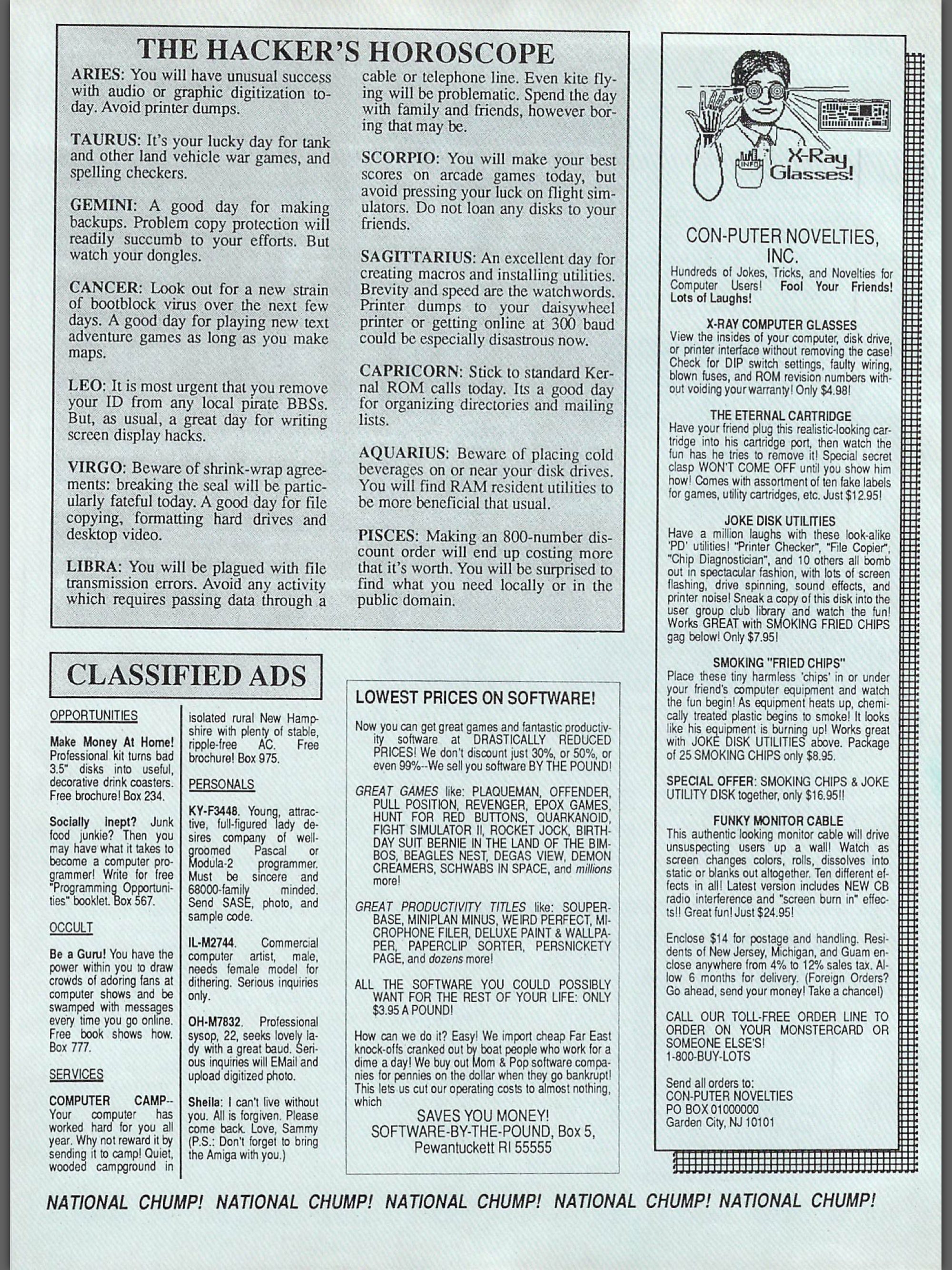
The ad said "Software for $3.95 a Pound". I could not figure out how that would even be possible. I finagled the purchase of this issue and upon re-reading it later I would realize that this was the parody section of the "Summer Fun" issue, so pfft.
The game reviews still had their simple box format which I enjoyed the aesthetic of: one box for a photo, another box for the review, 6 boxes per page.
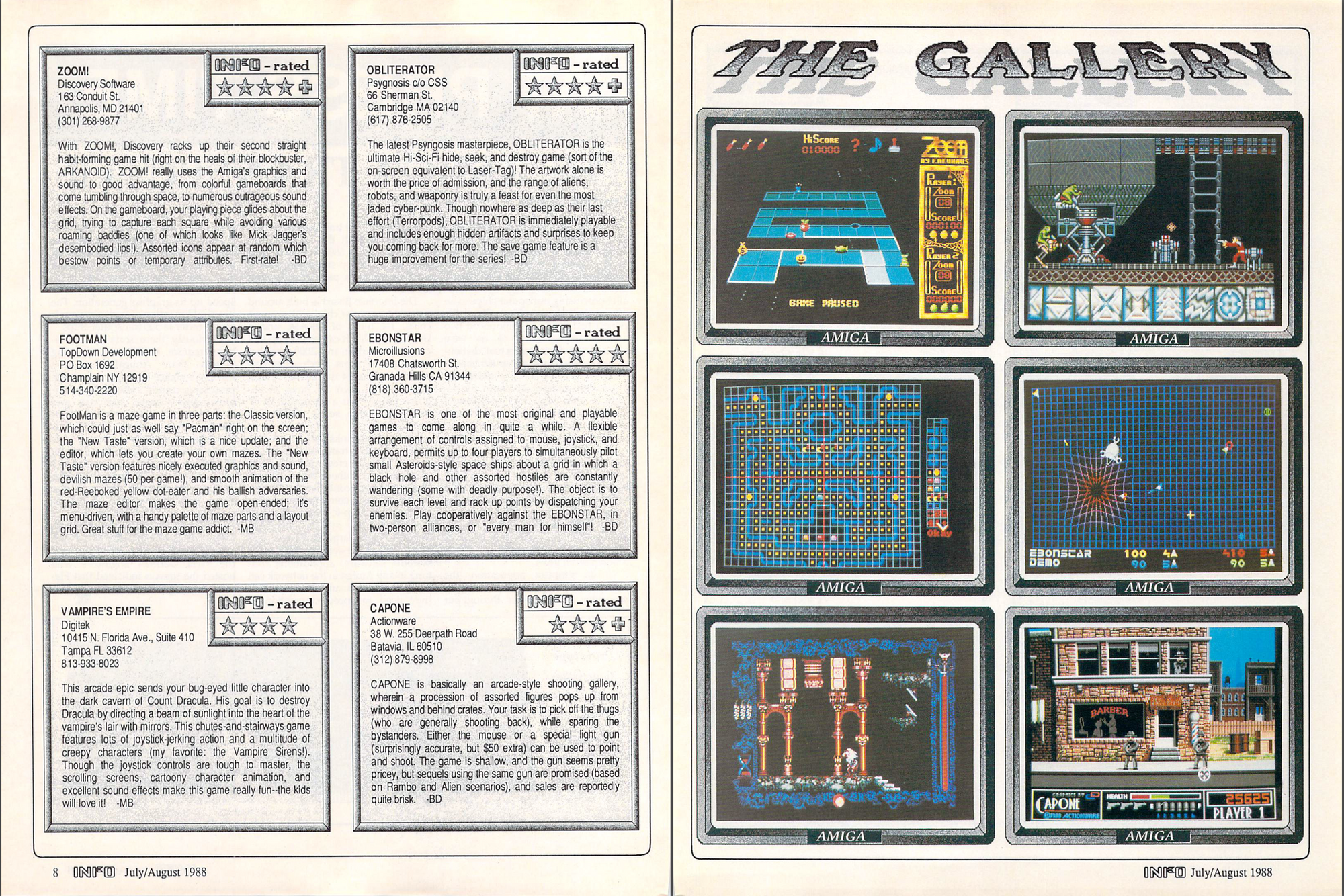
Somehow just two issues and four months later I got my name in print by submitting a game exploit!
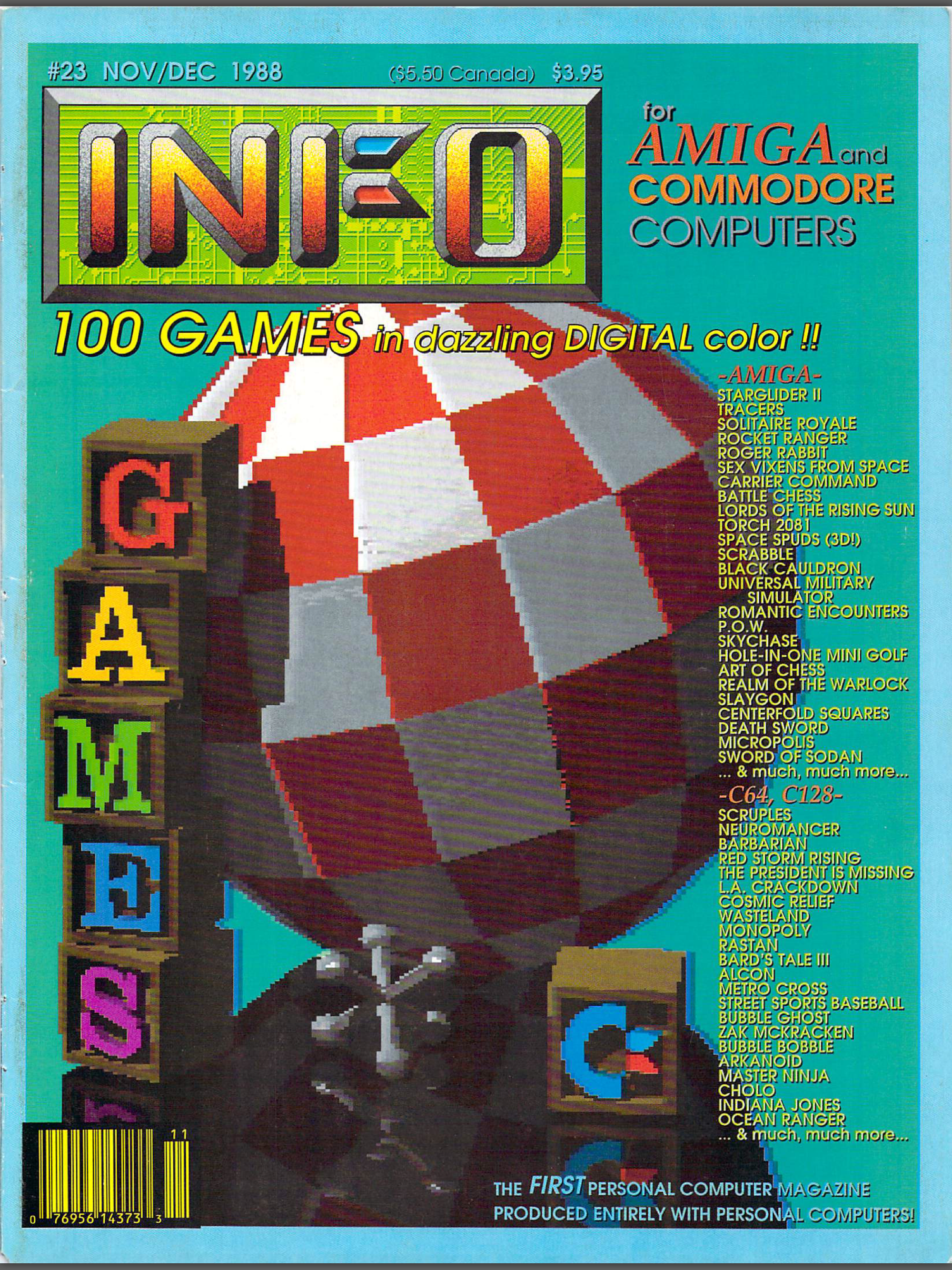
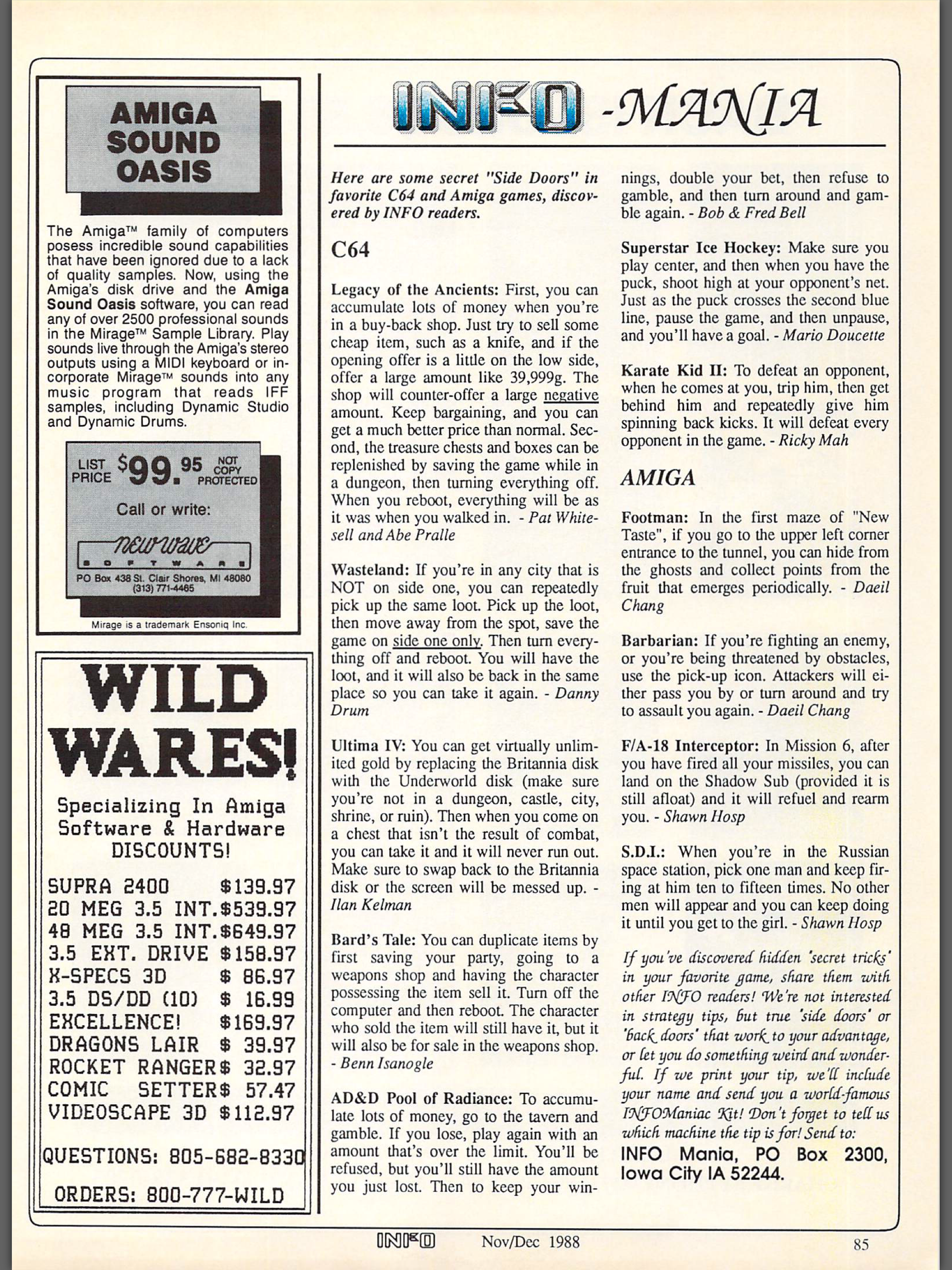
The famous "Boing" ball in action:
Fans and Fanatics
From beginning to end, .info was an independent, self-published magazine that wasn't owned by a larger company. For better and for worse, its enthusiastic and knowledgeable writers and editors were outspoken, opinionated, and evangelistic about Amiga computers and software. On the one hand they wouldn't pull any punches in their editorials and reviews. On the other hand it was hard for them to be objective about games that were ported to the Amiga from PC or Mac. It seemed like any game that was ported from the PC and only had 16 colors got an automatic 3/5 rating no matter how fun it was, so I didn't always trust .info's reviews.
Decline and Fall
In a nutshell, .info hitched their wagon to the Commodore Amiga and when Commodore went bust, so did .info.
Commodore struck gold twice, first with the Commodore 64 (developed internally) and again with the Amiga (purchased from the company who developed it). The C64 was best-in-class and one of the cheapest 8-bit computers. The Amiga was not only best-in-class and cheapest, it was years ahead of its competition. Like literally 10 years ahead in terms of windowing, multitasking, and sound, and about 5 years ahead in terms of graphics. But in both cases Commodore lacked the vision and/or the ability to keep pushing the envelope, and for both systems they would follow their initial success by releasing a series of unimpressive upgrades and variations.
In the early 1990's, with the help of the emerging "PC clone" market, it became possible to buy a PC that was cheaper, faster, had more memory, and had better graphics relative to Amigas - and Commodore had no substantial innovations in the pipeline. The Amiga's success in Desktop Video probably kept it going for year or two longer than it otherwise would have, but the end came in 1992 for .info and in 1994 for Commodore.
Final Thoughts
.info was a pioneering effort. It was the first magazine to be published entirely with personal computers, showing what was possible, and pushing the envelope.
At the time it would have blown my mind (and their minds, I'm sure) to think that 30 years later we'd be able to wirelessly download and read every issue on a clipboard-sized tablet computer that we can slip in a satchel!
Thanks for all the good memories, .info. You were a trailblazer and a great source of news and reviews for one of the most ground-breaking and remarkable computers ever made.
